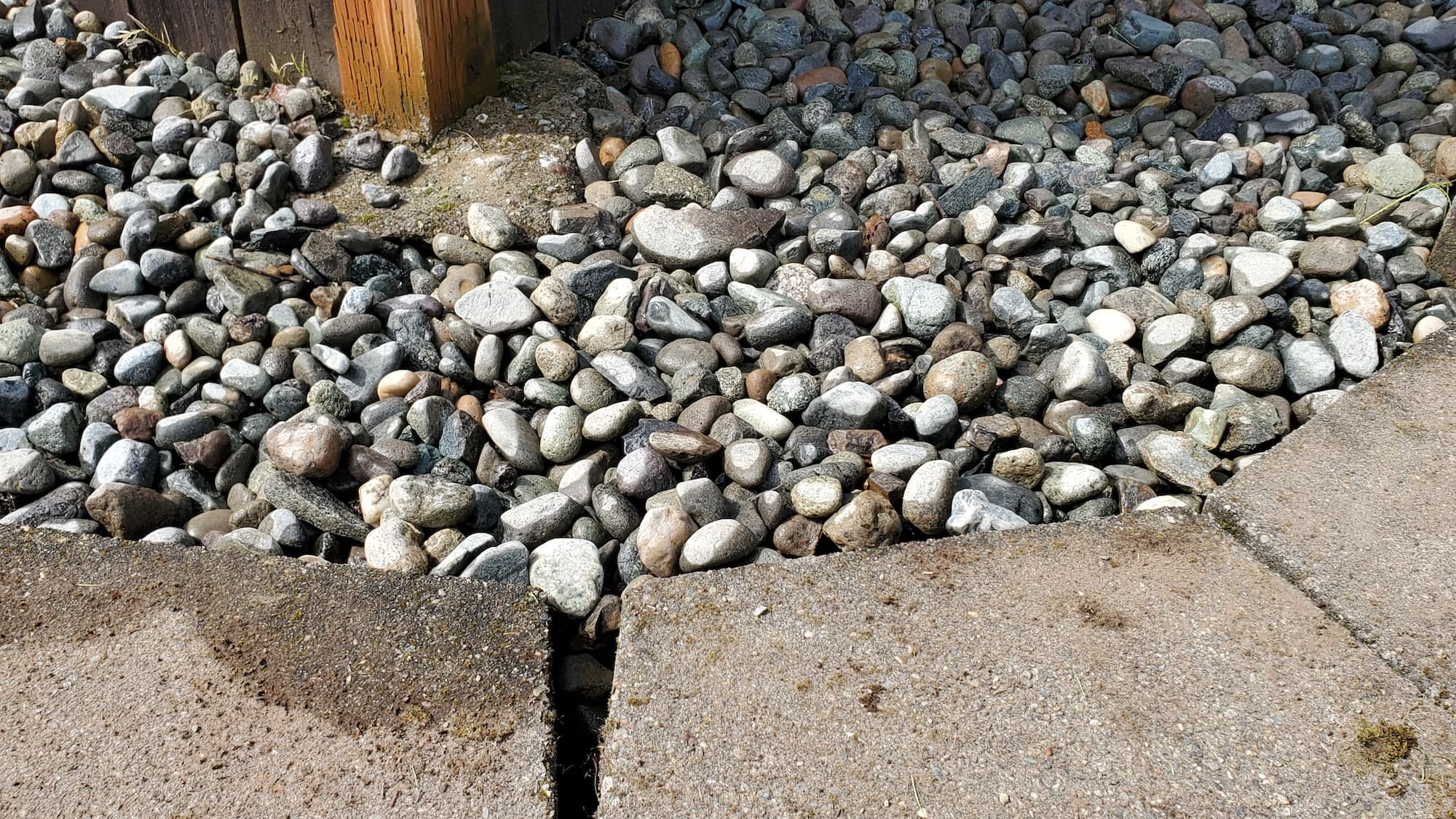West Seattle Drainage Gravel Replacement
Homeowner’s Issue
West Seattle yards face a mix of tight lots, heavy winter rains, and older properties built on compacted fill or glacial till. From Admiral down to Alki and up toward Highland Park, you’ll see water pooling in low corners, gravel that’s mashed into mud, and channels that used to work now clogged with soil and moss. Many homes have shallow grades that funnel roof runoff toward foundations or narrow driveways where gravel compacts and prevents infiltration.
Seattle’s Mediterranean-style climate means most of the rain falls October–April; summers are short and dry, which hides drainage failures until the next wet season. You’ll also run into moss on north-facing slopes, ivy choke in shaded strips by fences, and sandier mixes near the bluff areas. HOA sightlines in places like Fauntleroy and parts of Admiral expect tidy edges and uniform gravel—so aesthetics matter as much as function.
Replacing drainage gravel in West Seattle is more than dumping new rock. It’s grading to move water away from structures, selecting rock that resists compaction in wet cycles, and addressing underlying organic silt and roots that clog channels. Proper replacement reduces erosion on slopes, cuts standing water that attracts pests, and restores curb appeal for neighborhoods that expect neat edges and walkable paths.
Our Quality Service
We assess the site, remove old material by hand or machine, correct grades, and install proper-sized drainage gravel with sustainable practices only — no herbicides. Typical jobs take a half-day for a narrow run (e.g., downspout area) up to 1–2 days for multi-zone yards. We use wheelbarrows, portable compactors when needed, and low-impact excavation for sensitive slopes.
Local insight: West Seattle soils vary from dense clay to sandy fills; we test compaction visually and by probe, then pick gravel sizes that prevent clogging. We account for heavy winter flows, roof-runoff volumes, and existing curb cuts. Where slopes are present, we add check points and define flow paths. We follow Seattle water-use best practices — minimal watering for plant work, and sustainable erosion controls during install.
Benefits: safer walkways, protected foundations, cleaner curb appeal, fewer yearly touch-ups, and lower maintenance chores for you.
What’s Included
- Site assessment and photos before work.
- Removal and haul-away of old gravel / green-bin sorting for organics.
- Regrading to direct flow away from foundations.
- New drainage gravel installed to specified depth and slope.
- Light edging and clean-up; compaction where appropriate.
- Post-install walkthrough and care notes.
Options / Upgrades:
- Landscape fabric underlayment (helps keep fines out; reduces weeds).
- Organic weed control: hand-weeding and mulch zones (no herbicides).
- Haul-away vs. green-bin/compost separation for organic debris.
- Install of gravel transition strips for HOA-compliant curb appeal.
- Native plant buffer (drought-tolerant species) to stabilize soil.
Before & After / Expectations
Expect some noise and trucks during removal; we protect access and stage materials on-site. If access is tight (Alki bluffs or narrow Admiral alleys), we’ll use hand crews and smaller carts — extra time may be needed. Debris handling: we separate organics for green bin composting, haul heavy rock to lawful disposal or reuse on-site when suitable.
After the install you’ll see immediate reduction in puddling and clearer flow lines. In West Seattle, inspect after the first big storm; minor settling or redistribution in the first month is normal. For mossy, shaded strips, plan for seasonal hand-clearing — gravel helps but won’t eliminate persistent moss without added sunlight or trimming.
Care tips:
- Keep roof gutters clear to reduce sediment load into gravel drains.
- After storms, rake gravel lightly to keep flow paths open.
- Re-check gravel near base of slopes each fall; add 1–2 inches if fines have washed in.
- Avoid power-washing adjacent lawns into gravel beds — that pushes silt into drainage rock.
FAQs
Q: How long does new drainage gravel last here?
A: Properly installed gravel can perform well for many years; plan for light maintenance annually and a refresh every 5–10 years depending on sediment load.
Q: Will this stop all backyard puddles?
A: It reduces and redirects water, but stopping every puddle may require additional grading, swales, or dry wells depending on the volume of runoff.
Q: Do you use chemicals to control weeds?
A: No. We use mechanical, manual, and organic methods only — landscape fabric, mulches, and hand weeding.
Q: Can you work around steep slopes or stairways?
A: Yes. We use low-impact methods and erosion control; steeper areas may need terracing or plant reinforcement.
Call to Action
If your West Seattle property is soggy, eroding, or just looks tired at the edges, book a free estimate. We schedule quick assessments, show up on time, and give clear, local fixes that last. Trusted neighborhood experience from Alki to Fauntleroy — sustainable, practical, and straightforward.
Email: neatandtidyseattle@gmail.com
Phone: 206-538-9344
Mon–Sun: 9am–6pm
Licensed • Bonded • Insured










